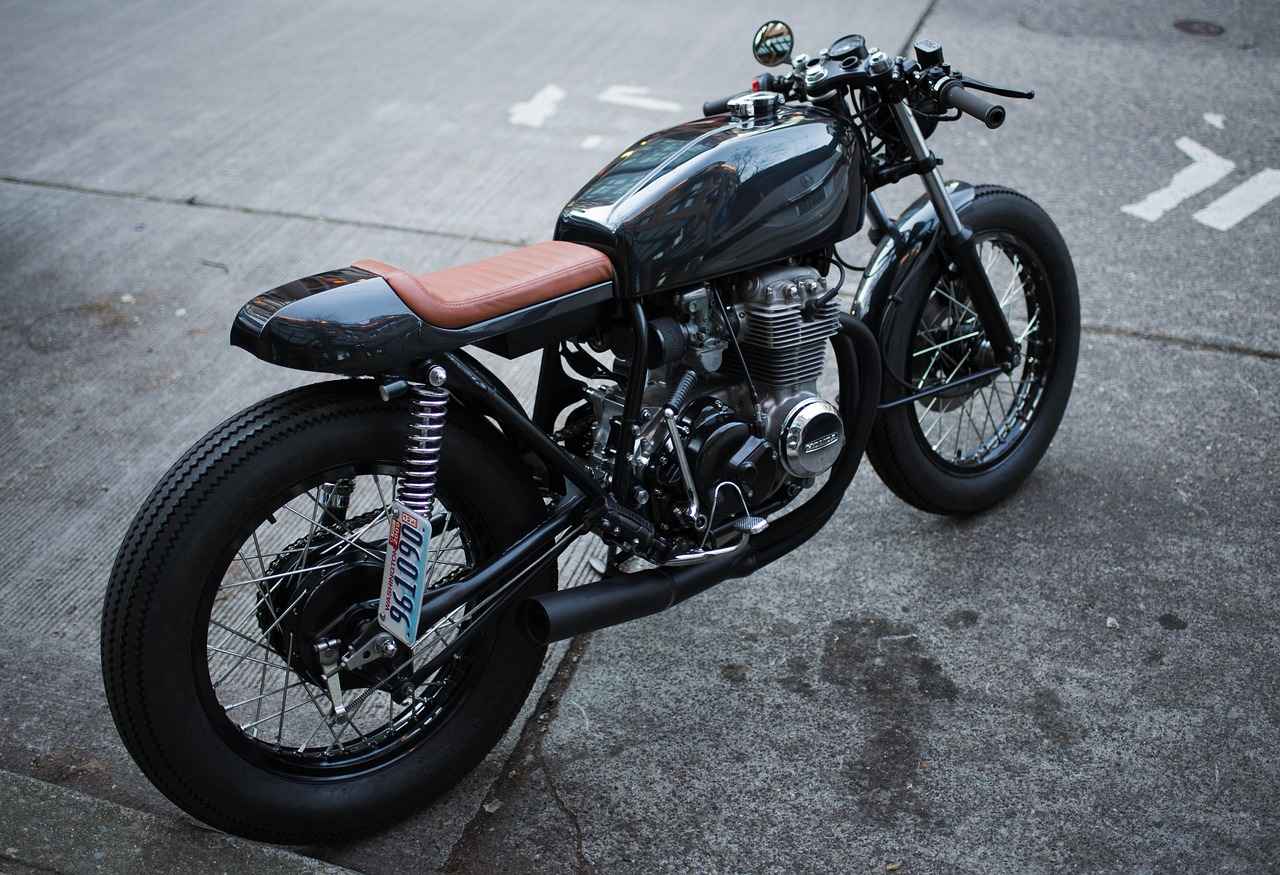This article provides a comprehensive guide on selecting the perfect electric bike, focusing on test rides, essential features, and expert tips to ensure you make an informed purchase.
Choosing the right electric bike can be a daunting task, but understanding the key aspects can make the process smoother and more enjoyable. In this guide, we will delve into the significance of test riding, the crucial features to consider, and practical advice to help you make the best decision for your needs.
The Importance of Test Riding an Electric Bike
Test riding is a critical step in the selection process. It allows you to assess comfort, handling, and overall performance before making a purchase. Each rider has unique preferences, and a test ride can reveal how well a bike meets your expectations.
Key Features to Consider in an Electric Bike
- Battery Life and Range: A bike’s battery capacity directly impacts the distance you can travel on a single charge. Understanding your riding habits is essential.
- Motor Power: The motor’s power affects acceleration and hill-climbing capabilities, making it a vital factor in your selection.
- Frame Design: The bike’s frame affects comfort and handling. Different styles, such as step-through and traditional, cater to various needs.
Accessories and Add-ons for Electric Bikes
Enhancing your riding experience can be achieved through various accessories. Consider adding racks, lights, and fenders to improve versatility. Additionally, invest in quality safety gear, like helmets and reflective clothing, to ensure your safety on the road.
Maintenance and Care Tips
Regular maintenance is crucial for keeping your electric bike in optimal condition. Simple care tips can extend its lifespan and enhance performance, ensuring a smooth ride for years to come.
Conclusion: Making an Informed Decision
By understanding the importance of test rides and key features, you can confidently choose the best electric bike that meets your needs. Take your time, explore different options, and enjoy the journey of finding the perfect ride.

The Importance of Test Riding an Electric Bike
Test riding an electric bike is an essential and often overlooked step in the buying process. It serves as a practical way to assess various aspects of the bike, ensuring that you make a well-informed decision before committing to a purchase. This hands-on experience allows potential buyers to evaluate the bike’s comfort, handling, and overall performance, which can significantly influence your riding experience.
When you take an electric bike for a test ride, you can directly feel how it responds to your movements. Comfort is paramount; you want a bike that feels good to ride over various terrains. Pay attention to the saddle and handlebar positioning—these factors play a crucial role in your overall comfort during longer rides.
Additionally, handling is another critical aspect to consider. During your test ride, observe how the bike maneuvers around corners and how it reacts to sudden stops or starts. A bike that feels stable and responsive will enhance your confidence on the road.
Moreover, assessing performance is vital. Different bikes offer varying levels of power, acceleration, and speed. Test riding allows you to gauge how well the bike performs on inclines and how efficiently it utilizes its electric motor. This experience can help you determine if the bike meets your specific riding needs, whether for commuting, leisure, or off-road adventures.
In summary, test riding is not just a formality; it is a crucial step that enables you to find an electric bike that aligns with your personal preferences and riding style. By taking the time to test ride, you can ensure that your investment is well worth it, leading to countless enjoyable rides in the future.

Key Features to Consider in an Electric Bike
When it comes to selecting the perfect electric bike, understanding key features is essential for making an informed decision. This section delves into the most critical aspects to consider, ensuring that your choice aligns with your unique riding needs and preferences.
- Battery Life: The battery is the heart of any electric bike. It determines how far you can travel on a single charge. A bike with a long-lasting battery is ideal for long-distance rides, while a shorter battery life may suffice for urban commuting.
- Motor Power: The power of the motor affects the bike’s performance, including its ability to tackle steep hills and accelerate quickly. A bike with a more powerful motor will provide a smoother and more enjoyable ride, particularly in challenging terrains.
- Frame Design: The design of the frame impacts comfort, stability, and handling. Bikes come in various styles, such as step-through and traditional, catering to different rider preferences. Choosing the right frame design can significantly enhance your riding experience.
Additionally, consider the following:
- Weight: A lighter bike is easier to maneuver and transport, while a heavier bike may offer more stability.
- Braking System: Reliable brakes are crucial for safety. Look for bikes with hydraulic disc brakes for optimal stopping power.
- Suspension: Depending on your riding style, a bike with good suspension can absorb shocks and provide a smoother ride on rough terrain.
By carefully evaluating these features—battery life, motor power, and frame design—you can select an electric bike that not only meets your specific needs but also enhances your overall riding experience. Remember, the right bike will feel like an extension of yourself, making every ride enjoyable and fulfilling.
Battery Life and Range
are two of the most critical factors to consider when purchasing an electric bike. The capacity of the battery directly influences how far you can travel on a single charge. Understanding this relationship is essential for ensuring that your riding habits align with the bike’s capabilities.
When evaluating battery life, it is important to consider the mAh (milliamp hours) rating of the battery. A higher mAh rating generally indicates a longer range. For instance, a bike with a 5000mAh battery may allow you to travel significantly farther than one with a 2500mAh battery. However, other factors such as terrain, rider weight, and assistance level also play a crucial role in determining actual range.
Typically, electric bikes can offer a range of anywhere from 20 to 100 miles on a single charge. If you plan on using your bike for daily commuting or longer rides, it is advisable to choose a model that offers a range that exceeds your average distance. This ensures that you won’t find yourself stranded without power.
| Battery Capacity | Estimated Range |
|---|---|
| 2500mAh | 20-30 miles |
| 5000mAh | 40-60 miles |
| 7000mAh | 60-100 miles |
Additionally, understanding the charging time is vital. Most electric bike batteries take between 4 to 8 hours to fully charge, but this can vary based on the battery size and charger specifications. If you plan to use your bike daily, consider models with fast-charging capabilities.
In conclusion, knowing the of an electric bike is essential for ensuring it meets your riding needs. By understanding battery capacity, estimated range, and charging times, you can make a more informed decision when selecting your electric bike.
Types of Batteries
When considering an electric bike, one of the most critical elements to evaluate is the type of battery used. Different battery types, such as lithium-ion and lead-acid, each come with unique characteristics that can significantly affect the bike’s performance and longevity.
Lithium-ion batteries are widely favored in the electric bike market due to their superior energy density and lightweight design. They typically provide a longer lifespan, often lasting for several years with proper care. Additionally, lithium-ion batteries charge faster and have a higher efficiency, allowing riders to cover more distance on a single charge. This makes them ideal for those who require a reliable range for daily commutes or long rides.
On the other hand, lead-acid batteries are generally more affordable but come with several drawbacks. They are heavier and bulkier, which can impact the overall weight and handling of the bike. Furthermore, lead-acid batteries tend to have a shorter lifespan and require more frequent replacements. While they can be suitable for casual users who ride less frequently, they may not be the best choice for serious cyclists.
| Battery Type | Pros | Cons |
|---|---|---|
| Lithium-ion | Lightweight, long lifespan, fast charging | Higher initial cost |
| Lead-acid | Lower cost | Heavier, shorter lifespan, slower charging |
Understanding these differences is essential in guiding your choice. If you prioritize performance and longevity, investing in a bike with a lithium-ion battery may be the best option. Conversely, if you are on a tight budget and plan to use the bike occasionally, a lead-acid battery might suffice.
In conclusion, the type of battery you choose can significantly influence your electric biking experience. By weighing the pros and cons of each battery type, you can make an informed decision that aligns with your riding needs.
Charging Time
When it comes to selecting an electric bike, is a crucial factor that can significantly influence your riding schedule. Understanding how long it takes to charge an electric bike’s battery is essential for ensuring that you can maximize your riding experience without unnecessary interruptions.
Most electric bikes utilize lithium-ion batteries, which are known for their efficiency and relatively quick charging capabilities. Typically, the charging time for these batteries ranges from 3 to 6 hours, depending on the battery capacity and the charger used. However, it’s important to note that some high-capacity batteries may require longer charging times.
When planning your rides, consider the following factors:
- Daily Riding Distance: If you plan to ride long distances, ensure that your battery can hold enough charge to cover your needs without requiring frequent recharges.
- Charging Locations: Identify convenient charging spots, especially if you commute or travel frequently. This can include home, work, or public charging stations.
- Charging Options: Some electric bikes offer fast charging options that can significantly reduce downtime. Check if your model supports this feature.
Additionally, it’s wise to establish a routine for charging your bike. For instance, charging overnight can ensure that your bike is ready to go each morning. If you plan to take longer rides, consider charging during breaks to keep the battery topped up.
In conclusion, understanding the of your electric bike is vital for planning your rides effectively. By considering your riding habits and the available charging options, you can make informed decisions that enhance your overall biking experience.
Motor Power and Performance
When selecting an electric bike, motor power is a pivotal element that can greatly influence your overall riding experience. The motor’s wattage not only determines the bike’s acceleration but also its ability to tackle challenging terrains, such as steep hills. Understanding how motor power impacts performance is essential for making an informed decision that aligns with your riding needs.
A higher wattage motor typically translates to greater torque, enabling faster acceleration and more effective hill-climbing capabilities. For instance, if you plan on commuting in hilly areas or carrying heavy loads, opting for a bike with a motor rated between 500 to 750 watts can provide the necessary power to navigate inclines effortlessly. Conversely, if your rides are primarily flat and involve shorter distances, a motor with lower wattage may suffice, allowing for a more energy-efficient ride.
Another important aspect to consider is the motor’s placement. Electric bikes can feature hub motors located in the front or rear wheel, or mid-drive motors situated at the bike’s crank. Mid-drive motors tend to offer better balance and handling, especially on steep climbs, as they utilize the bike’s gears to optimize performance. In contrast, hub motors may provide a more straightforward riding experience but can struggle with steep inclines.
Furthermore, evaluating the bike’s pedal-assist levels is crucial. Many e-bikes come with multiple assist modes, allowing you to customize the level of support based on your riding conditions. This feature not only enhances your control over the bike’s performance but also contributes to battery efficiency, extending your ride time.
In summary, when considering an electric bike, pay close attention to the motor power and its implications on performance. By understanding the relationship between motor wattage, placement, and pedal-assist options, you can select a bike that meets your specific riding requirements and enhances your overall cycling experience.

Frame Design and Comfort
The frame design of an electric bike is a crucial aspect that significantly influences your overall riding experience. A well-designed frame not only enhances comfort but also plays a vital role in the bike’s handling and stability. This is essential for ensuring enjoyable rides, whether you’re commuting through the city or exploring scenic trails.
When considering the geometry of an electric bike’s frame, it’s important to note that different designs cater to various riding styles and preferences. For example, a step-through frame allows for easy mounting and dismounting, making it an excellent choice for urban riders or those with mobility concerns. On the other hand, a traditional frame often offers better performance for long-distance rides and rugged terrains.
Furthermore, the material used in the frame construction can affect both the bike’s weight and durability. Common materials include aluminum, which is lightweight and resistant to rust, and steel, known for its strength and shock absorption properties. Each material has its own set of benefits that can enhance your riding comfort.
Another aspect to consider is saddle and handlebar adjustability. Having the ability to customize the height and angle of your saddle and handlebars can greatly improve your riding posture, reducing fatigue on longer rides. Many electric bikes come equipped with adjustable components, allowing riders to find their optimal setup.
In summary, the design and geometry of an electric bike’s frame are fundamental in determining comfort, handling, and stability. By understanding these factors, you can make an informed decision that aligns with your riding style and enhances your overall experience on the road.
Types of Frame Designs
When it comes to selecting the perfect electric bike, understanding the various frame styles is crucial. The frame design not only affects the aesthetics of the bike but also plays a significant role in your overall riding experience. Here, we will explore the most common types of electric bike frames, helping you make an informed choice that aligns with your needs.
- Step-Through Frames: These frames feature a low top tube, allowing riders to easily mount and dismount the bike without needing to swing a leg over. This design is particularly beneficial for those with limited mobility or those who frequently wear skirts or dresses. The step-through frame offers a comfortable and convenient riding experience.
- Traditional Frames: Also known as diamond frames, these have a more classic design with a top tube connecting the seat and handlebars. This style typically provides a sturdy and stable ride, making it a popular choice for commuting and long-distance cycling. Riders who prioritize performance and speed often prefer traditional frames.
- Folding Frames: Ideal for urban commuters, folding electric bikes can be easily collapsed for storage or transport. These frames are designed for portability and convenience, allowing you to carry your bike on public transport or store it in small spaces.
- Fat Tire Frames: Designed for off-road adventures, fat tire frames accommodate wider tires that provide better traction and stability on various terrains. If you plan to ride on rough trails or in snowy conditions, a fat tire electric bike might be your best option.
Each frame style has its unique advantages, and the best choice will depend on your specific riding needs and preferences. Consider factors such as comfort, intended use, and personal style when making your selection. A test ride can further assist in determining which frame design feels right for you.
In conclusion, understanding the different types of frame designs is essential for selecting the right electric bike. Whether you opt for a step-through for ease or a traditional frame for performance, the right choice will enhance your cycling experience and ensure you enjoy every ride.
Saddle and Handlebar Adjustability
is a crucial aspect of electric bike design that significantly impacts your overall riding experience. The ability to adjust these components ensures that you can tailor your bike to fit your unique body type and riding style, ultimately enhancing both comfort and performance.
When it comes to saddles, having an adjustable option allows you to find the perfect height and angle that aligns with your natural riding posture. This is particularly important for long rides, as a well-adjusted saddle can prevent discomfort and reduce the risk of injury. Many electric bikes offer ergonomically designed saddles that provide adequate support while minimizing pressure points.
Similarly, the handlebars play a vital role in your riding comfort. Adjustable handlebars enable you to modify the height and reach, which can greatly influence your riding position. Riders who prefer a more upright position for leisurely rides can benefit from higher handlebars, while those seeking a more aerodynamic posture for speed may opt for lower settings. This customization helps in achieving optimal ergonomics, reducing strain on your back and wrists.
Furthermore, many modern electric bikes incorporate features such as quick-release mechanisms for easy adjustments on the go. This flexibility allows you to make changes based on your riding conditions or personal comfort preferences without the need for tools. Whether commuting, touring, or enjoying a weekend adventure, the ability to adjust your saddle and handlebars can transform your riding experience.
In conclusion, investing in a bike with adjustable saddles and handlebars is essential for anyone looking to maximize comfort and performance. Tailoring these elements to fit your body and riding style can make a significant difference, ensuring that every ride is as enjoyable as possible.

Accessories and Add-ons for Electric Bikes
Enhancing your electric bike experience goes beyond just the bike itself; accessories play a significant role in improving functionality, safety, and comfort. By investing in various add-ons, you can make your electric bike not only more versatile but also tailored to your unique riding needs.
- Racks: Adding a rack to your electric bike allows you to carry extra gear, groceries, or even a backpack. This is especially useful for commuters or those who enjoy long rides. Racks come in various styles, including rear and front-mounted options, providing flexibility based on your needs.
- Lights: Safety should always be a priority when riding, especially in low-light conditions. Installing bright LED lights on your electric bike can enhance visibility, making you more noticeable to other road users. Consider both front and rear lights for comprehensive coverage.
- Fenders: Protect yourself and your bike from mud, dirt, and water with fenders. These accessories are particularly beneficial for those who ride in wet or muddy conditions, ensuring that you stay clean and comfortable throughout your journey.
- Locks: Security is crucial for any bike owner. Investing in a high-quality lock can protect your electric bike from theft, giving you peace of mind when you park it in public spaces.
- Phone Mounts: For those who like to navigate using their smartphones, a sturdy phone mount can be a game-changer. It allows for easy access to navigation apps and keeps your phone secure while you ride.
Incorporating these accessories into your electric bike setup can vastly improve your riding experience. Not only do they add functionality, but they also enhance safety and comfort, making your rides more enjoyable.
When choosing accessories, consider your riding style and the environments in which you typically ride. This will help you select the most beneficial add-ons for your electric bike.
Safety Accessories
are not merely optional when it comes to riding electric bikes; they are essential for ensuring your safety on the road. The right gear can significantly reduce the risk of injury and enhance your overall riding experience. Here, we delve into the types of safety accessories you should consider and their importance.
- Helmets: A high-quality helmet is your first line of defense. It protects your head in the event of a fall or collision. Look for helmets that meet safety standards and offer a comfortable fit.
- Reflective Gear: Wearing reflective clothing or accessories increases your visibility to motorists, especially in low-light conditions. This is crucial for night riding or during inclement weather.
- Lights: Front and rear lights are vital for being seen by others. They illuminate your path and signal your presence to vehicles approaching from behind.
- Gloves: Protective gloves not only enhance grip but also provide cushioning in case of a fall. They help you maintain control of the bike while keeping your hands warm in cooler weather.
- Knee and Elbow Pads: These pads offer added protection for your joints, which are particularly vulnerable during accidents. They are especially recommended for beginners or those who plan to ride on rough terrain.
Investing in quality safety accessories can make a significant difference in your riding experience. Not only do they protect you, but they also give you the confidence to ride more freely. Remember, safety should always be your top priority when enjoying the thrill of riding an electric bike.
In conclusion, equipping yourself with the right safety gear is a wise investment that can protect you on the road and enhance your overall riding experience. Prioritize your safety by choosing accessories that suit your needs and riding style.
Maintenance and Care Tips
Maintaining your electric bike is essential for ensuring its longevity and optimal performance. Regular maintenance not only enhances the bike’s efficiency but also contributes significantly to your safety and riding experience. Below are some essential care tips that every electric bike owner should follow.
- Regular Cleaning: Keeping your electric bike clean is vital. Dirt and grime can accumulate on the frame, chain, and components, affecting performance. Use a soft cloth and mild soap to clean your bike regularly.
- Battery Care: The battery is the heart of your electric bike. Ensure it is charged properly and avoid letting it fully discharge. Store it in a cool, dry place when not in use.
- Tire Maintenance: Check tire pressure regularly and ensure they are inflated to the recommended levels. Inspect for any signs of wear or damage and replace tires when necessary.
- Brake Inspection: Regularly check your brakes for responsiveness. Adjust or replace brake pads as needed to ensure your safety while riding.
- Chain Lubrication: A well-lubricated chain ensures smooth gear shifts and extends the lifespan of your bike’s components. Lubricate the chain every few hundred miles or as needed.
- Professional Servicing: Schedule regular check-ups with a professional bike mechanic. They can provide in-depth inspections and address any issues you might overlook.
By following these maintenance tips diligently, you can significantly extend the lifespan of your electric bike and enhance its overall performance. Remember, a well-maintained bike not only improves your riding experience but also ensures your safety on the road. Investing time in care and maintenance will pay off in the long run, allowing you to enjoy countless rides with peace of mind.

Conclusion: Making an Informed Decision
When it comes to purchasing an electric bike, making an informed decision is crucial. Understanding the significance of test rides and key features can greatly enhance your overall riding experience. Test riding an electric bike allows you to evaluate its comfort, handling, and performance firsthand, which is essential before committing to a purchase.
During a test ride, pay attention to how the bike feels while you ride. Is the seat comfortable? Does the bike handle well around corners? Performance metrics such as acceleration and braking response should also be assessed. This hands-on experience helps you determine if a particular model aligns with your personal preferences and riding style.
In addition to test rides, understanding the key features of electric bikes is vital. Focus on aspects like battery life and motor power. A bike with a longer battery range will allow for extended rides without the worry of running out of power. Similarly, a more powerful motor will provide better performance on inclines and during acceleration.
Frame design is another critical element to consider. A well-designed frame not only enhances comfort but also contributes to stability and control. Look for features like adjustable saddles and handlebars, which can be tailored to fit your body type and riding style.
Finally, don’t overlook the importance of accessories. Items such as lights, fenders, and racks can significantly improve your biking experience. Safety gear, including helmets and reflective clothing, is also essential for ensuring a safe ride.
In conclusion, by recognizing the importance of both test rides and key features, you can confidently select the electric bike that best meets your needs. This thoughtful approach will not only enhance your riding experience but also ensure that you make a wise investment in your biking journey.
Frequently Asked Questions
- What should I look for when test riding an electric bike?
When test riding, focus on comfort, handling, and how the bike feels during acceleration. Pay attention to the weight distribution and whether you can easily reach the handlebars and pedals. It’s like trying on a pair of shoes; you want to make sure they fit just right!
- How important is battery life for an electric bike?
Battery life is crucial! It determines how far you can go on a single charge. If you plan to ride long distances, look for bikes with higher capacity batteries. Think of it as the fuel tank for your adventures; the bigger it is, the farther you can travel!
- Are there different types of electric bike motors?
Absolutely! Electric bikes typically come with hub motors or mid-drive motors. Hub motors are located in the wheel and are great for casual rides, while mid-drive motors offer better performance and hill-climbing capabilities. It’s like choosing between a sports car and a family sedan!
- What accessories should I consider for my electric bike?
Consider safety gear like helmets and lights, as well as practical add-ons like racks and fenders. Accessories can enhance both your safety and riding experience, making your bike more versatile. Think of them as the cherry on top of your electric bike sundae!
- How do I maintain my electric bike?
Regular maintenance is key! Keep your bike clean, check tire pressure, and ensure the battery is charged properly. Just like a car, your electric bike needs care to stay in tip-top shape. A little TLC goes a long way!













